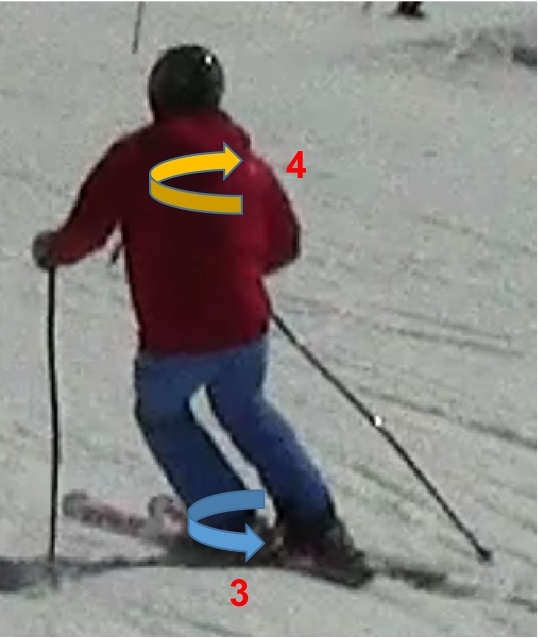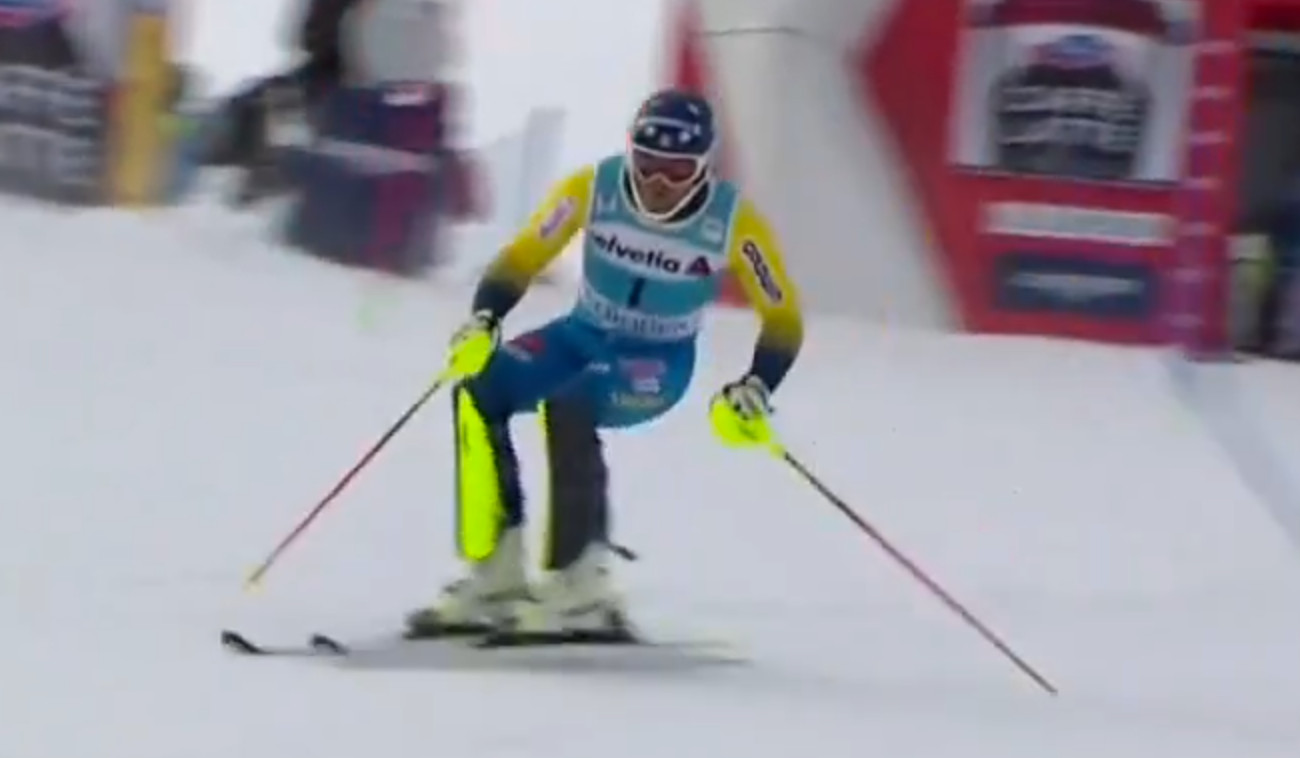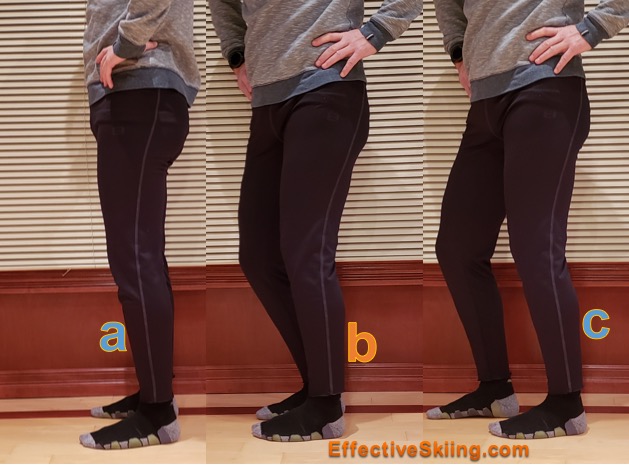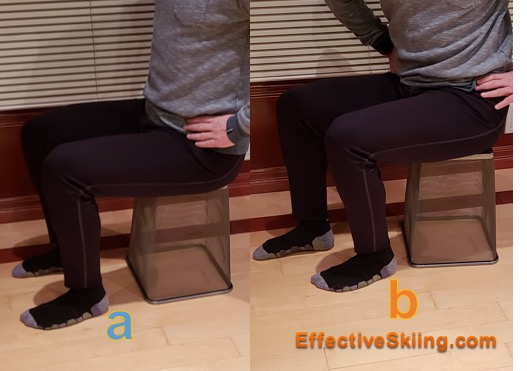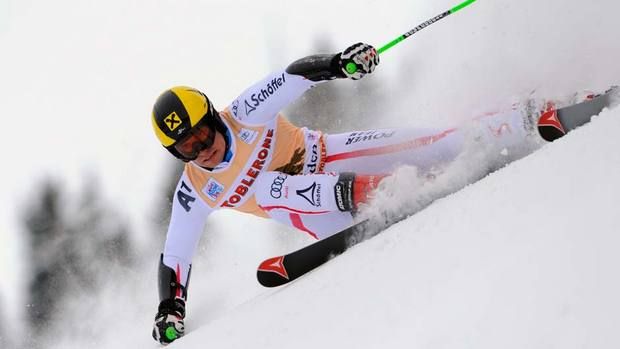The biomechanics of counteraction
Subscribe
Pub
Share
Sometimes referred to as Separation or counter, coiling or Counteraction is one of the critical ingredients of performance skiing and racing at the higher levels and also one of the less understood. Let's take a look at the detailed biomechanics of this movement in different situations, from beginner all the way to advanced.
Notice the counter here (inside hip leading a lot):
Counteraction is number (4) below (as the ski rotates into the turn (3) the hips counter by turning the other way):
And it can look like this, at an advanced level:
Or... like this, at the WC level:
Rotate the hip
The simplest explanation of how to counteract is to rotate the hip around the top of the femur. While some instructors and coaches may teach creating separation as a pivoting motion of the skis or twisting of the feet while keeping a stable upper body, the movement we are looking for, in high-performance skiing, is that of moving the hips instead.
This different perspective becomes obvious once you think about the physics of an engaged ski: as opposed to a skidding ski, the leg is not forcefully turned by the skier anymore, the engaged ski turns the leg, so in order to maintain what appears like a stable upper body the skier must effectively turn the upper body the other way, to counteract the turning of the ski.
We can view this movement as both rotating the hips on top of the femur and moving the inside hip forward - they are both very useful:
In the photo above, you see the separation created by rotating the hip on top of the left femur (the left leg would be the outside leg). This simulates very well a carving situation, where the ski is engaged in the snow and cannot skid, so no pivoting is possible. The only thing one can do to create counter is to rotate the hip instead, i.e. counteraction.
Read Femur rotation for more details.
The hip not the shoulder
Beginners that counter will most likely start to counter with the shoulders because we are not used to rotating the hips - unless you're into dancing etc.
However, twisting and putting the spine under stress is not that good, this movement should really be about rotating the hips around the femurs, that's a set of strong muscles and a good range of motion. Also, including the hips in this will allow us to counter not just half of the upper body, but with the big mass which is around the hips.
Lazy or not
There is a -what I call "lazy"- way to create counter and that's option (c) above - option (b) is much better...
To see more on this topic, you need a membership. (Basic)
Advanced counteraction: move inside hip forward
The example above, where you counteract by rotating the hip in the hip socket, really only applies when the leg is long. As soon as the leg flexes, the angle of the femur changes and the mechanics change with it.
At the extreme case, of full flexion, where the knee is at 90 degrees (like sitting on a chair) you can no longer rotate the hips in the hip socket, to produce the same result. At this point, the movement becomes simply moving the inside hip forward, whatever it takes... and what it takes is shuffling the inside leg forward (or dorsiflexing the ankle), but for sure that inside knee moves forward.
This becomes very important when we talk about separation and counter in transition or maintaining the counteraction through the transition - this is discussed at the black/expert level:
Counter and keeping the inside foot back
We've said the better version of counter is one where you also pull the inside foot back - limited by the stiffness and the angle of the boot cuff, but the effort is what matters.
This creates an issue, for someone that starts with a lot of counter on a longer leg (like in the first set of photos) and ends the turn with a lot of flexion, like in the set of photos above. If at the same time, this skier insissts on keeping the boots even (pulling hard the inside boot back) this will square up the hips and undo the counter.
This is typical in high-performance skiing and this takes a lot of practice to get the hang of it and not square up in transition.
Practice at home
You can and should do some practice at home, to see and understand the movements. Best to use a mirror and go through the poses shown above, but focusing of course on the movements. Do you have enough range of motion? How does it feel? Can you exaggerate it? etc...
Play with the different leg lengths and shuffling versus pulling the inside heel back.
Flexing and counter
Play with the flexed version of it - use it in boots and see how much you can do and what is the actual movement you have to do...
Leg length, shuffle and the boots
The biggest issue with counteraction is the boot cuffs and it takes some experimentation to figure out how these details affect your movements and your skiing.
You can start by playing on this at home. Then, on snow, the best set of drills to work on this are the drills in the braquage family and especially the Inside braquage:
Expert counteraction and high angle turns
When looking at WC skiing and high-performance skiing, things change once again, from a biomechanics perspective! We've already seen this situation:
But there's also this situation, which is very different:
The difference is...
To see more on this topic, you need a membership. (Gold)
Short vs long turns
Counter is not specific only to short or long turns, although they do tend to look different. Here's counter in Slalom turns, at the world cup and expert level, two sides of the same coin:
While in longer turns (Giant Slalom) it could look like this:
More reading
Work on the counteraction with the Coiling workout session.
More reading:
Drills:
Sessions:
See more in: carving-blog Subscribe You need to log in to post a comment!

